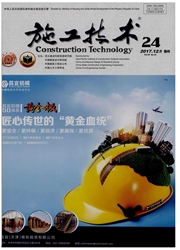

 中文摘要:
中文摘要:
根据南京长江夹江跨江步行桥的工程特点,为适应长江中下游冲刷水流的水文条件,确定其基础形式为钢管斜桩,采用打桩船锤击钢管斜桩,完成该步行桥的基础施工。钢管斜桩在目前国内为数不多,与普通钢管桩相比,施工及测试难度较大。为了确定钢管斜桩的承载力,国内首次采用自平衡法对2根钢管斜桩进行现场试验。试验表明,其中1根钢管斜桩承载力不够,使用打桩船对其进行锤击,其后进行第2次自平衡静载试验,试验结果显示承载力满足设计要求。
 英文摘要:
英文摘要:
Based on the characteristics of the pedestrian bridge in the Nanjing Jiajiang Yangtze River, to adapt to water scouring hydrologic conditions on the midstream and downstream, inclined steel-pipe pile is determined to be the foundation form and piling barge is adopted to hammer the pile to accomplish the foundation construction of this pedestrian bridge. Inclined steel-pipe pile is rarely used in the current domestic, compared with ordinary steel pipe piles, its construction and testing is more difficult. Self- balance method is used for the first time in China to determine the bearing capacity of the two inclined steel-pipe piles. The tests indicate that one of the two inclined steel-pipe piles' bearing capacity is not enough, so piling barge is used to hammer the pile, then the self-balance static loading experiment is used at the second time, the test results show that the bearing capacity meets the design requirements.
 同期刊论文项目
同期刊论文项目
 同项目期刊论文
同项目期刊论文
 期刊信息
期刊信息
